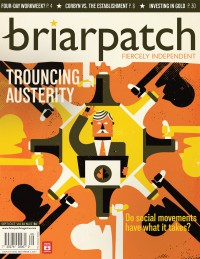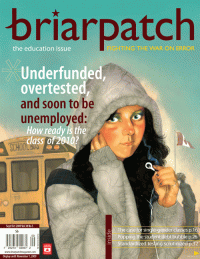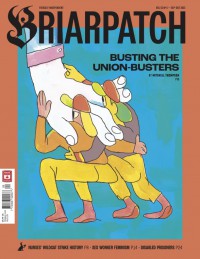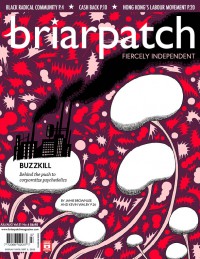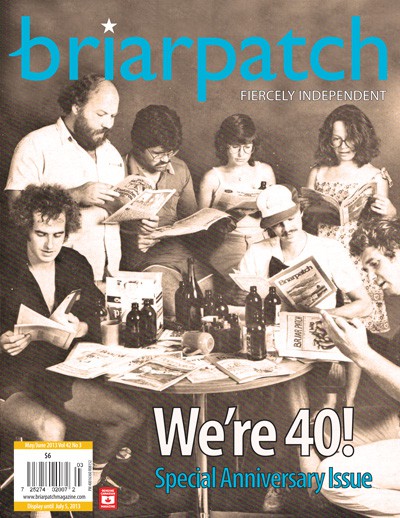
This issue of Briarpatch marks our 40th anniversary of publishing. Former staff members and volunteers reflect on 40 years of scraping by and thriving as a grassroots magazine of radical politics, from a four-page newsletter titled Notes from the Briar Patch in 1973 to a magazine with national reach. Joe Catron reports from the Gaza Strip on fishers and farmers on the front lines of occupation, Aaron Lakoff writes on resistance to repackaged neoliberalism in Quebec’s North, and Leanne Betasamosake makes the case for a diplomacy of love.
Add To Cart $7.95
-
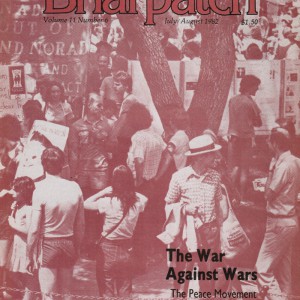 Magazine
MagazineLetter from the editor
Briarpatch has always been a labour of love, the key to its unlikely success, as past editor Dave Mitchell notes. “It consistently leads with the heart, and so it’s able to produce quality journalism with a tragic fraction of the masthead depth of most publications.”
-
 Magazine
MagazinePolitics based on justice, diplomacy based on love
Treaties are not about the cession of land but rather a commitment to stand with one another.
-
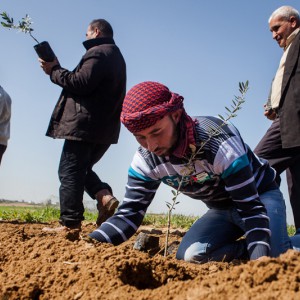 Magazine
MagazineOrganizing for Gaza’s land and sea
Gaza’s farmers and fishers are on the front lines of a military occupation intended to force them from their land and seaways. The Union of Agricultural Work Committees is organizing Palestinian farmers and fishers to support their efforts to remain on the land and sustain an independent agricultural economy. With the help of a growing international boycott against Israel, their strength is growing.
-
 Magazine
MagazineInnu not idle as Plan Nord advances
As Pauline Marois’ Parti Québécois tries to repackage the Charest government’s neoliberal policies, resistance to the massive Plan Nord project is escalating among the northern Innu people and their allies. Even as band councils enter negotiations with the Canadian government, grassroots activists inspired by Idle No More are fighting for Indigenous autonomy and their traditional territories.
-
 Magazine
MagazineDear Briarpatch
The following poem was pieced together from snippets of letters to the editor of Briarpatch’s 40-year history. Each line is a direct, unedited quote from a Briarpatch reader, with the voices of dozens of readers represented in the whole poem.
-
 Magazine
MagazineReflections on 40 years of scraping by and thriving
“Briarpatch has always been a labour of love, and I believe that’s the key reason for the magazine’s unlikely success.”
-
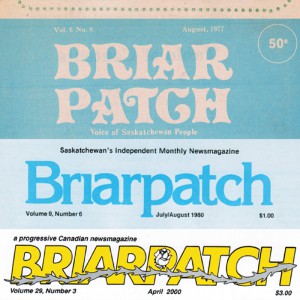
-
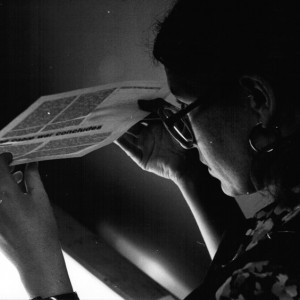 Magazine
MagazineBriarpatch in photos
From curling bonspiels to baseball tournaments and fundraising dinners, we present a series of photos from the Briarpatch archives.
-
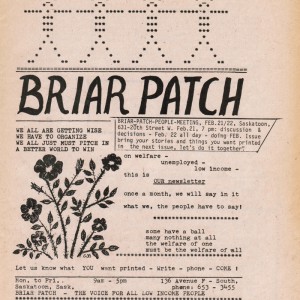 Magazine
MagazineBlaming Mr. Brierley
The first issue was photocopied in March or April 1971 at the Saskatoon Family Service Bureau (where I was working at the time) on one of the early machines that used rolls of that grey, waxy paper.
-
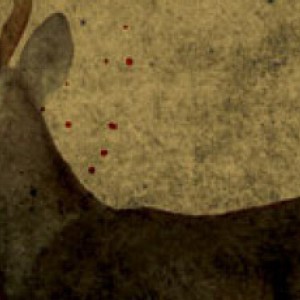 Magazine
MagazineAn accidental scarring
Whitetail Shooting Gallery follows cousins and neighbours Jennifer and Jason as they grow up in the stark landscape of the Bear Hills near Saskatoon.
-
 Magazine
MagazineGood ideas are not enough
Crass sees “collective liberation” – a term borrowed from an essay by bell hooks – as a “vision of what we want and a strategic framework to help us get there.”
-
 Magazine
MagazineCalling all our superheroes
I am often conflicted as an educator. As a Native woman, I consider the current system of education in Canada to be inherently colonial, and I hate my role in perpetuating it.



